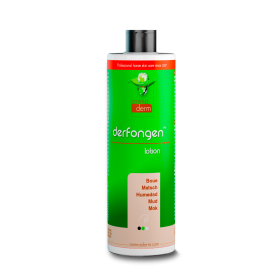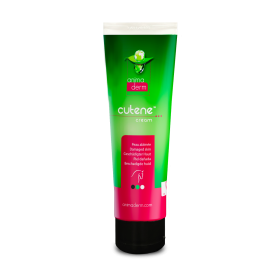Leg crusts: Case 5: photosensitization in winter
It's not uncommon for scabs to suddenly appear on the legs with white socks in the middle of winter. Of course, the quick conclusion is that it's mud scab and not photosensitization, since the sun can't be the reason at this time of year.
But the opposite is true. The sun is indeed the culprit...but several months earlier. In the summer preceding this attack, it's almost certain that the leg had been damaged by UV rays (or a plant), without it being visible. The skin had withstood the summer, but was no less attacked for all that.
It's in the following season (autumn or winter) that the leg begins to crust, most often on the outside of the leg.
Photosensitization even in winter!
The previous summer, the leg with white socks had been subjected to violent attacks of sunlight. The area resisted as best it could, but it held out. There was no reason to expect a sudden deterioration well after the summer.
The skin's elastin was damaged by exposure to the sun. Accentuated by a general skin dryness, albeit invisible to the naked eye, the epidermis cracked and weakened considerably.
The arrival of autumn or winter, with its wind, rain, mud and cold temperatures, began the process of destroying the last of the skin's resistance.
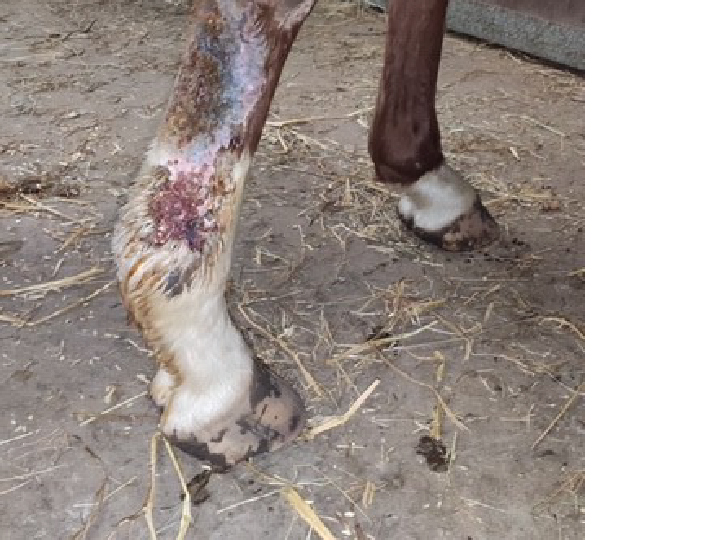
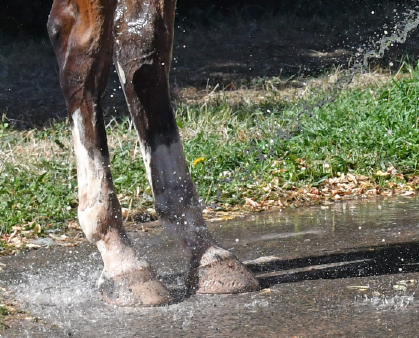
Yes and no.
If the affected area is very crusty, SHAMPOO TEA TREE will be essential (but above all, no anti-bacterial soap), and only once before the rest of the treatment. The skin can no longer accept water, especially when it's cold. From now on, water should be avoided as far as possible. The initial use of SHAMPOO TEA TREE will purify the leg, soften scabs and leave a protective film on the skin, crucial for healing.
If, on the other hand, the skin is rather smooth, gentle brushing and possibly "patting" with a clean damp cloth and preferably lukewarm water will suffice.
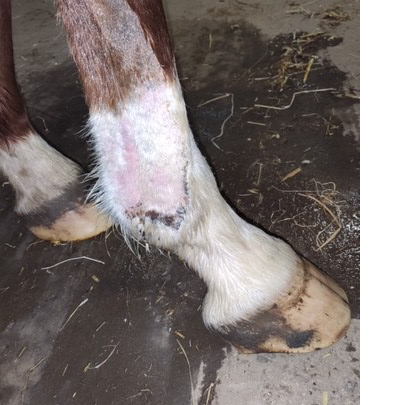
Lesions are fragile and any use of aggressive products such as sulfur or anti-bacterial agents will considerably slow down repair and increase the risk of recurrence.
The skin has been seriously damaged. It must be treated as gently and as quickly as possible.
Apply DERFONGEN 1 time and 1 hour after NATJELY in a thick layer.
2 days later, apply CUTENE without shampooing or showering.
2 days later, repeat this routine if the area is still unsatisfied.
After 2 routines, if the area still hasn't improved (which is very rare if the problem is caught in time), the use of antibiotic creams will become absolutely necessary (see your vet).
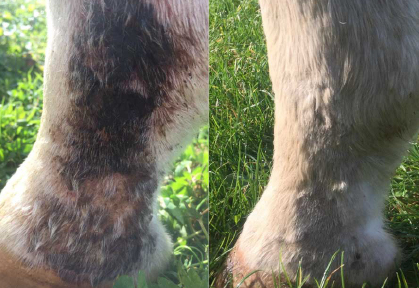
Once the skin is smooth and pink again, it's important to protect it while the hair grows back. NATJELY is perfectly suited to application every 2 or 3 days.
If necessary, CUTENE will accelerate this repair by alternating with NATJELY.
For the duration of the treatment, don't forget to protect the area with a working strip if you're doing career sessions (and only then).
Once the problem has been solved, and the skin has been weakened, a prevention routine should be put in place. > See our protocol "Preventing mud fever in horses".
 ANIMADERM S.A.S
ANIMADERM S.A.S


